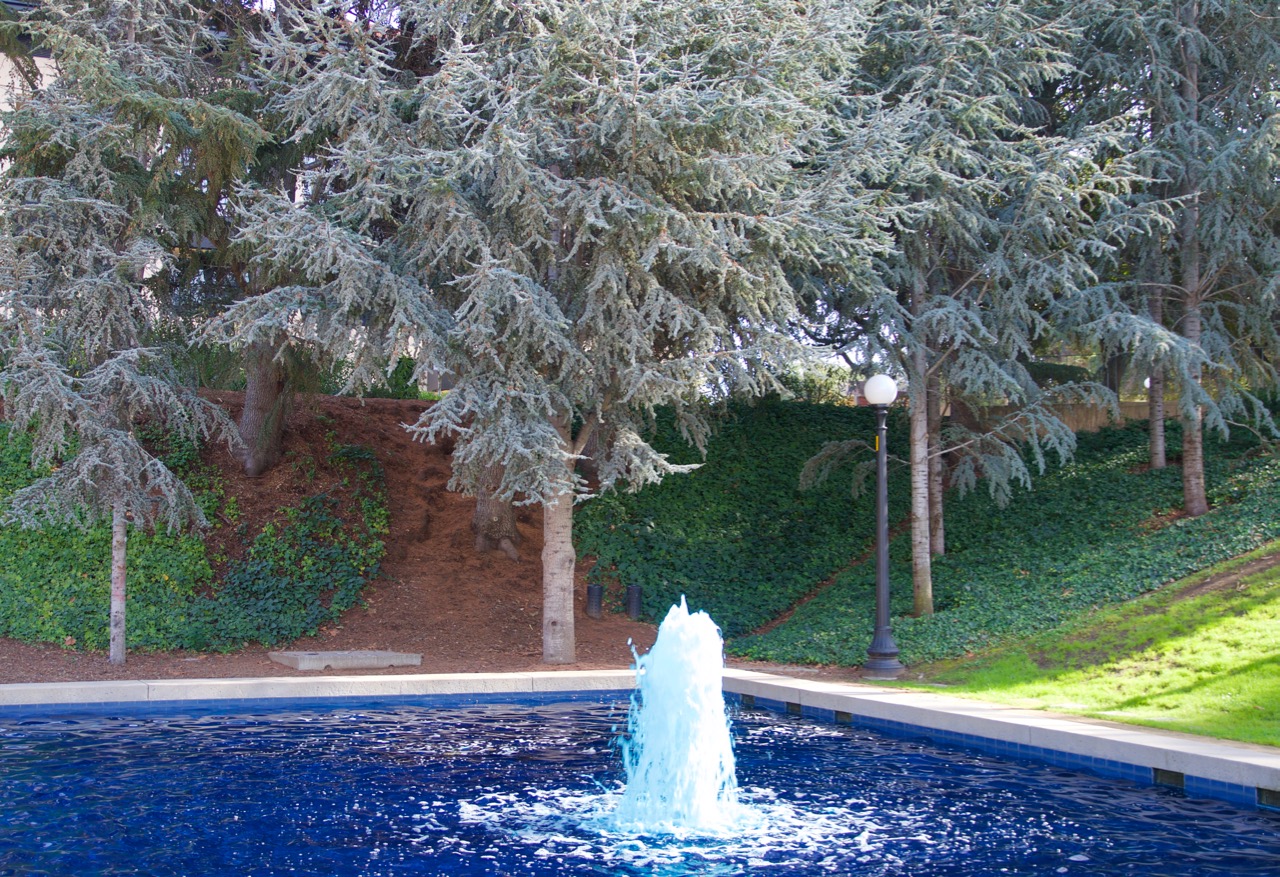Cedrus atlantica
 Atlas cedar
Atlas cedar


Widely planted on campus, these striking cedars have a distinctive form and color. The needles, about an inch long, are gathered in tufts on short stalks. The cones stand upright on the branches, are barrel shaped, and about 3 inches long. The upright growing tip distinguishes it from the deodar cedar. Atlas cedar may be seen in the Dohrmann Grove on Jane Stanford Way at Lasuen Mall and in the New Guinea Garden.
The blue form, Cedrus atlantica var. glauca, can be seen southeast of the Old Union and in front of the Cantor Center (10 feet in girth). In the lawn in front of Hoover Tower is a large specimen. Two others are immediately outside the west entrance to the Inner Quad. In the Arboretum, there are a dozen flanking the closed road north of the intersection of Campus Drive East and Lasuen Street. A striking example of a pendulous blue Atlas cedar is at 849 Pine Hill Road, near Bowdoin Street. In the fall a copious mat of large male cones accumulates below the cedars.
Name derivation: Cedrus – Latin name for cedar; atlantica – Atlas Mountains.
About this Entry: The main text of this entry is from the book Trees of Stanford and Environs, by Ronald Bracewell, published 2005. Name changed from C. libani atlantica to C. atlantica, and ‘Glauca’ to var. glauca (Nov 2017, SP). Harrison commemorative tree note moved to Sequoia gigantea entry; edits (May 2024, SP).


